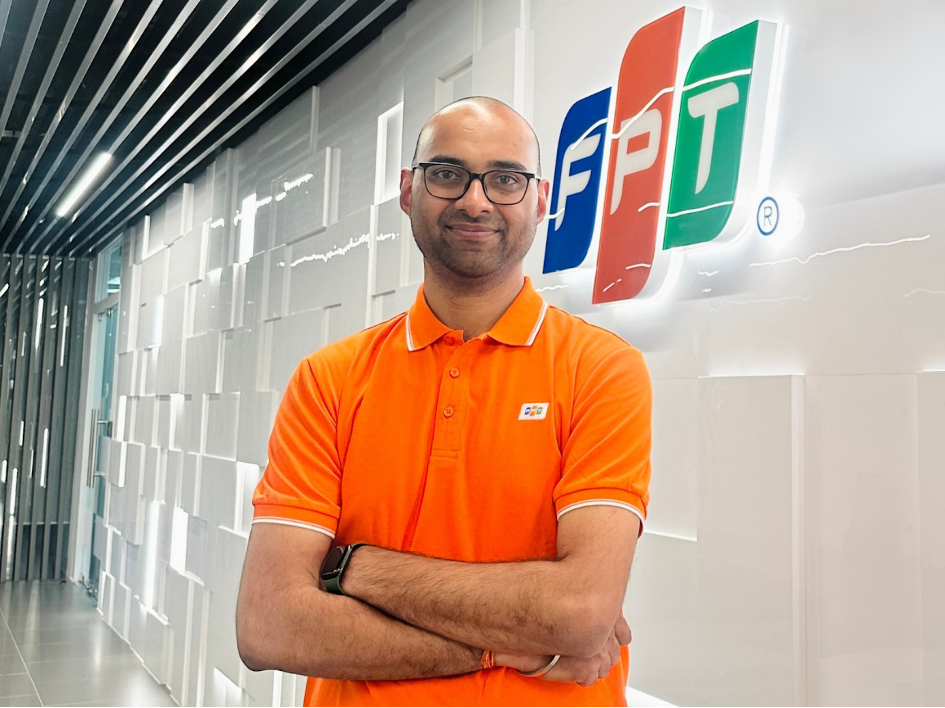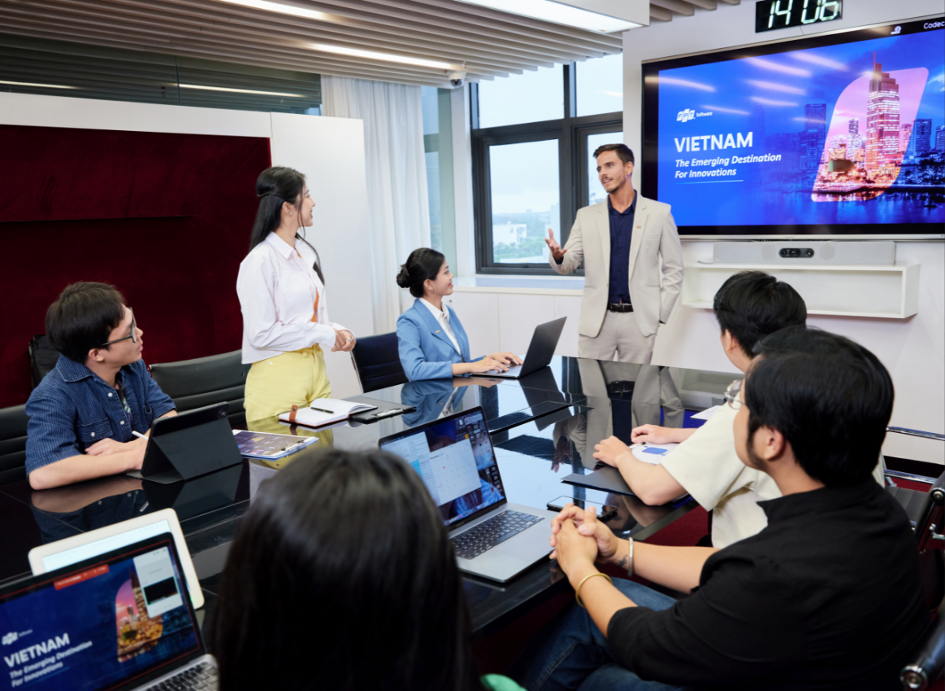
In response to the rapid rise of artificial intelligence, Indian businesses and policymakers have taken early steps to minimize disruption by upskilling workers at scale. Leading technology firms such as Tata Consultancy Services and Infosys have already trained hundreds of thousands of employees in AI-related skills, aiming to future-proof their operations and stay competitive in a fast-evolving global landscape.
These developments highlight an urgent question for Vietnam: how are local businesses preparing their workforce for an AI-driven future? With digital transformation high on the national agenda, Vietnam’s ability to build AI capabilities across industries could play a critical role in maintaining its growth momentum and economic resilience in the years ahead.
Indian enterprises roll out large-scale AI training
Training the workforce in AI skills is considered a prerequisite for India to avoid falling behind in the increasingly fierce global technology race. Four Indian companies — Tata Consultancy Services (TCS), Infosys, HCLTech, and Wipro — currently rank among the world’s top 10 most valuable IT services brands and are leading this initiative. Their efforts aim to help realize India’s ambition of making AI a core driver of socio-economic development in the digital age.
For instance, by the end of fiscal year 2024, TCS had reskilled over 300,000 employees in foundational AI and machine learning competencies, including generative AI. TCS refers to this as the ‘AI-ready’ program, which equips employees with the knowledge and skills needed to apply AI in their daily work. Today, more than 570,000 of its 600,000 employees are considered AI-ready.
Meanwhile, Infosys has gone strongly on AI, aiming to make its entire workforce “AI-aware” — meaning they possess a foundational understanding of AI and are prepared to adapt to emerging technologies. To date, the company’s AI training programs have reached over 270,000 employees worldwide, accounting for approximately 84 per cent of its total workforce. By the end of 2024, Infosys developers had written more than 7 million lines of code using the AI-powered tool GitHub Copilot, significantly enhancing productivity and code quality.
A survey by Naukri.com, India’s largest online recruitment platform, reveals that roughly one-third of Indian tech professionals are undergoing formal AI training at work. Nearly 50 per cent of employees with over 10 years of experience consider GenAI a top-priority skill. Interestingly, only 18 per cent of professionals listed layoffs as their top concern. Overall, AI training is rapidly becoming the new standard in India’s tech sector.
AI training for corporate employees: 70 per cent of the barriers are mindset-related
Just like India’s rapid AI upskilling, the workforce in Vietnam is now mobilizing for a similar transformation. However, the real battleground lies not just in technical readiness, but in mindset readiness. According to Mr. Prajith Nair, Vice President, Head of Learning and Innovation, and Head of FPT Software Academy at FPT Corporation, up to 70 per cent of challenges for AI training come from a legacy mindset.
People get attached to legacy systems and resist change. The same applies to adopting AI in organizations. Only certain groups show enthusiasm for new innovations, while the majority are slow to learn and adopt. He also points out that a cultural reluctance to debate or challenge ideas can hinder AI learning and application. To truly benefit from AI, individuals must develop strong critical thinking skills. Unlike passive tools, AI behaves more like a debateful colleague—one that expects to be prompted, challenged, and engaged in thoughtful dialogue to deliver meaningful insights.
“AI deployment requires a change management strategy, not just technical training,” Mr. Prajith Nair emphasized.

From the enterprise perspective, 65 per cent of Asia-Pacific business leaders believe GenAI improves performance, while 76 per cent see an urgent need to reskill staff, and 41 per cent admit they haven’t started implementing GenAI (PwC’s 27th Annual Global CEO Survey). PwC points out that the main reasons include the breakneck speed of GenAI’s evolution, which many businesses struggle to keep up with—combined with a lack of practical understanding of how to apply AI in real operations.
This raises an urgent warning: companies and workers who don’t invest in AI risk falling behind in an increasingly tech-driven, innovation-led economy.
FPT rolls out the ‘AI for Everyone’ campaign company-wide
FPT considers AI training for its employees one of the most urgent missions to help each individual enhance their productivity and effectiveness in daily work. All FPT employees are continuously trained in AI knowledge, how to use AI applications, and how to collaborate effectively with AI agents. In 2024, 98.8 per cent of employees received basic AI training, totaling over 109,200 learning hours.
At the beginning of 2025, FPT launched the “AI for Everyone” (Bình dân AI vụ) initiative across the entire corporation. Under this program, every employee is required to complete at least one AI course and apply AI tools in their work to boost performance. Employees can choose from a wide range of AI-related courses and application tutorials available on platforms like Udemy, Coursera, and the company’s internal learning platform.
In addition to online courses, FPT also organizes specialized workshops on AI applications tailored to different industries and departments. These workshops aim to help employees integrate AI into their specific job roles more easily and effectively.

Additionally, over 10,000 FPT employees received certifications from NVIDIA’s AI program in 2024. Alongside AI training for its employees, FPT is also aiming to equip a vast workforce of 500,000 people with AI skills and knowledge by 2030.
According to Mr. Prajith Nair, successfully training employees in AI on a large scale and within a short timeframe requires meeting four key factors.
First, raise AI awareness among leaders. Leadership must understand AI’s role in growth strategies to drive top-down transformation.
Second, modularize training programs. Design role-specific courses for developers, testers, business analysts, and others.
Third, use data to measure impact. Track completion rates and real-world application to evaluate effectiveness.
Fourth, build a learning community. Foster a culture of daily AI use through internal forums, workshops, and experience sharing.
AI – Run fast or fall behind
A recent LinkedIn study shows that companies with high AI maturity outperform others by 18 per cent in revenue. The AI race has entered an acceleration phase. For both individuals and companies, transformation is no longer optional.
According to Mr. Prajith Nair, Vietnamese workers are fast learners, highly committed, and more adaptable than peers in many other countries. These traits offer a strong foundation for thriving in the AI era.
Meanwhile, AI is a once-in-a-century opportunity for businesses as well. It shortens development cycles. Milestones that once took 10 years can now be achieved in just one. It flattens the playing field, allowing small companies and startups to compete with global giants.
In today’s race, differentiation is the key. Rapid AI adoption is a survival strategy.








 Google translate
Google translate